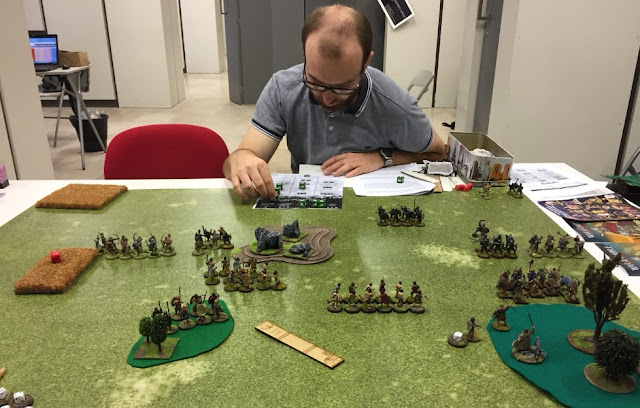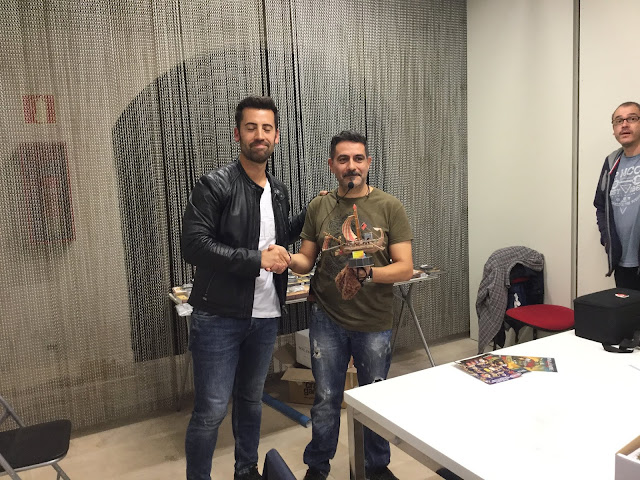James and Annie Hackney
Introduction
I have always been fascinated with this picture above ever since I
saw it as a boy, of my Great Grandfather James and his wife Annie. I knew he
died in the war, but when and how was a mystery, there were so many questions unanswered. My
Grandad was very young when his father died, so little was known and passed down, only that they believed he was
hit direct by an artillery shell and his body was never found. After a few
years of research I have been able to piece together some of his life which I
would like to share with you below.
James Hackney was born in 1888 in Longton, Stoke-on-Trent. In 1891 he was living with his family at 5 Church Lane, 68 Normacot Road
On the
21st June 1912 he married Annie
Mellor at St James Church, Longton. (the same church I married my wife, Lynn seventy seven years later).
St James Church
In 1912 they had twins, Annie (who sadly died in the same year) and John Thomas (my grandad). Florence and Lily M were born in 1914, the same year as the outbreak of the first world, (Lily M died the same year). Their final child, James, was born
in 1915. In 1915 James was working at a potbank called Jackson Gregory Street 6 Warren St
Grosvenor Works
On the 13th January 1915, James made the trip to Butterton Barracks near Leek to join the 5th North Staffords Territorials
New recruits from the Stoke area walking to Butterton to enlist.
James had a medical at Butterton Barracks and was approved to be enlisted the next day and he was put into bombardier service . His medical states that he was 29 years old, 5ft 7 inches tall, chest 33inches that can expand 2 inches and it seems he was shortsighted right 6/9 and left 6/12.
James' medical report
James elected to sign up for the duration of the war
James' signature to enlist in the army.
His older brother Ralph was already a member of the battalion enlisting before the war on
James was posted to France 3rd Sept 1916 probably due to the enormous losses of the British soldiers during
the summer at the Battle Somme . He was transferred to A Company of the 8th North Staffs Battalion who had been heavily involved in the battle and was reunited with his younger brother Rupert who was a corporal in the
Battalion. They were holding the line at Ploegsteert, and after three weeks of
uneventful line-holding they were relieved by the 1st Battalion South
Staffords, 7th Division, who, curiously enough, included many of the men who
had been wounded with them at La boiselle a couple of months earlier. Thus
there was much hand-shaking and exchange of banter.
Commonwealth Soldiers in the same trenches occupied by James in 1916
This finished their period of trench work in the north, and on the 26th September they marched to Pradelles after having
halted one night in Meteren. A very pleasant time was spent at Pradelles near Hazebrouck,
for the next three weeks, during which training of all kinds went forward and reinforcements were received . During this period of "rest," the outstanding events were inspections of the 57th Brigade by General (now Lord) Plumer and
by H.M. The King of the Belgians. General Plumer presented medal ribbons to a
number of Officers, N.C.O's and men. King Albert made a very thorough inspection of the Brigade,
and was kind enough to speak in very high terms of its appearance and bearing.
James and Rupert stayed here for three weeks
This very pleasant period
was, however, not to end without a most regretful episode. On the eve of the
battalion leaving Pradelles, the Battalion Bombing Officer, 2nd Lieut. Buxice,
and the Bombing N.C.O., Corporal Hughes, while instructing a class, were killed
by the premature explosion of a bomb. This sad accident cast a gloom over the
whole Battalion, and their death was a severe loss to them. Corporal Hughes, a
finely-built' man, over six feet in height, had been known to throw a bomb 73 yards . Lieut. Bunce, young, keen "and enthusiastic, was a
particularly good instructor, and a general favourite with everyone. They were
buried the following day at Hazebrouck.
The 6th October found the battalion bound for the Somme area for the second time.
Entrainment took place at Bailleul and detrainment at Doullens, and after one
night at Thievres they marched to the Bois-de-warimunt, where accommodation was
provided in huts. A fortnight was spent in this wood,
British troops resting on their way to the front trenches, the wood James had stayed in (Bois-de-Warimont) can be seen in the background.
during which attack in artillery formation was practiced, and
parties were sent up to Hebuterne, about seven miles away, to inspect the line in
view of a possible offensive from this part of the front which, however, did
not materialise. The battalion were suddenly moved on the 17th October by
cross-country route to Warloy, to take part in a totally different attack
scheme. Four days later they moved forward another stage, by marching, to the
Brickfields near Albert, where they bivouaced for the night under wintry
conditions. The 22nd October broke with a tremendous artillery bombardment by the
British guns, which we afterwards learnt was the artillery preliminary to the
taking of " Stuff" and " Regina
British troops in October 1916 passing the huge craters made by the British digging under the German trenches and filling them full of explosives.
Almost immediately on the Battalion's taking over the line bad
weather set in, a sharp frost, followed by heavy rain, soon had' the whole
ground, which was scarred with shell holes and loose earth, churned up into a
sea of clinging mud. Of all the periods hitherto spent in the line, in all the
many sectors they had occupied, and of all the various experiences they had
undergone, since the battalion had landed in France
The whole country
had, for the past four months, been deluged with shells from both sides, with
the result that every foot of it had been blown up time and again. It was not
so much a question of the shell holes touching each other, the ground was one
enormous shell hole. Thiepval, the scene of some of the bitterest fighting of
the Somme Battle, was within a few hundred yards of " Stuff Redoubt,"
and the advance here, since 1st July, had only penetrated a few thousand yards.
On this small area had been concentrated an intensity of shell fire hitherto
unprecedented. The effect of bad weather on the heavy clay soil, ploughed up as
it had been, can be better imagined than described. The traffic over this
ground was enormous: R.E. material to consolidate their newly-won position, and
to build footpaths and corduroy tracks, ammunition to feed the insatiable guns
(which were everywhere), rations, water, Red Cross stores, everything had to
traverse this quagmire, and many men and animals were literally engulfed in the
clinging mud, some never to be extricated. The struggles of the mules and
horses were bad enough ; those of the men, loaded with rifles, ammunition,
equipment and sometimes rations as well, were beyond description.
There was one man of the Battalion, who slipped up in a fresh shell
hole, in the so-called front line trench, and was buried up to his armpits for
26 hours, despite every effort made to dig or drag him out. Men were stuck in the mud and only extricated by the timely arrival of a mule, to
which they were harnessed and thus dragged from the clinging, sticky, stuff.
Some men were never rescued, the damp and intense cold of the mud in
which they were caught proving too much for their tired bodies: all they could
do was to crave a speedy death from the rifle of a friend. No wonder they were
all dog-tired, even after one short spell in the line, and the so-called
resting out of the line was little better. The billets they were given were at
the best ruined houses in Aveluy village. Usually it was a case of bivouacing
in dug-outs in the old German front and support lines, or shivering under
improvised shelters of odd pieces of corrugated iron covered with a ground
sheet.
British soldier resting near Aveluy wood
Once they were actually given Nissen huts, which were being
hurriedly erected; but there were only four for the whole Battalion, and so
crowded' and muddy that a great number of men preferred to sleep under, rather
than in the hut. Luckily, being built on a slope, there was just room to crawl
underneath. It was highly desirable that the attack, which was planned to take
place immediately, should take place at the earliest possible moment, but the
bad weather necessitated day to day postponements. The enemy's shelling was continuous
and exceptionally severe. They were relieved after two days by the 8th
Gloucesters, and had a very trying time getting clear of the line. Some idea of
the state of the ground may be gained from the fact that some of the men took
25 hours to traverse the distance (about three miles) from the line to billets.
Accommodation was found for the Battalion in dug-outs in the old German front
line, close to two of our Batteries (a 60-pounder and18-pounder), which were
almost continuously firing over their heads. Casualties were severe during this
tour, 78
" other ranks " in all. James died on the Wednesday 25th October, due to being a private, his death is not recorded in the regimental history, however it was recorded that on his final day, the battalion were attempting to cross a part of the battlefield when they came under heavy enemy artillery fire which caused casualties because of the state of the muddy ground. They could not move quickly to safety as their feet and legs were sinking into the boggy ground. If a soldier was not hit directly by a exploding shell they could be buried and suffocated by the tons of earth and mud thrown into the air by shells exploding when burying into the ground. I remember my Aunties telling me that James was killed by a direct hit from a shell and there was nothing left of him to bury. I always wondered how could the family know this when their was no official account of his death. However now we know that his brother Rupert was with him in the battalion and may have actually witnessed his death, I believe this could have happened.
This photo shows the type of terrain James and Rupert found themselves on that day.
James’s brother, Rupert managed to get word
back to his own wife about James' death, which was passed on to Jame's wife, Annie a couple of weeks after. Although she wasn’t officially notified until 21st January 1917, three months later by the War ministry. At that time she was living at 95 Uttoxeter Road, Longton. On the
15th October she was living at 35 Lord St
Victory Medal
Front and back
On the 31st July 1917 Annie received a letter telling her that she would receive a
pension of 28/9 a week from the 6th August 1917
for her and their five children although only 3 were still living at this time.
James is commenerated in two physical places, at Thiepval war memorial in France and Longton war memorial.
Thiepval War memorial and cemetery, Somme , France
Longton War Memorial, Stoke-on-Trent, Staffordshire
He is also remembered in his family's and great grandson's heart (me) and now I have been able to fill in some of the details of his life here on my blog, hopefully others will remember his ultimate sacrifice as well.
Pvt James Hackney 40511 8th North Staffords 1888-1915
















































